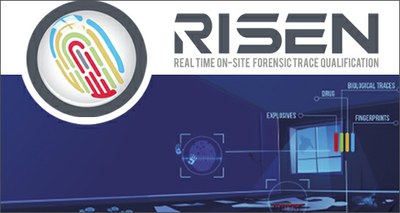Technology: Sensor networks and augmented reality for real-time forensic investigations
21/1/2021
 Hyper-technological sensor networks and augmented reality techniques for non-destructive, quick and accurate forensic investigations directly at the crime scene.
Hyper-technological sensor networks and augmented reality techniques for non-destructive, quick and accurate forensic investigations directly at the crime scene.
This is the aim of the European project RISEN (Real-tIme on-site forenSic tracE qualificatioN) , comprising 20 partners from 12 countries including, for Italy, ENEA as coordinator, the Ministry of Defense, University of Bergamo and CREO Consortium - Electro-Optical Research Center based in L'Aquila.
The technologies developed under RISEN will be tested for Italy by the Forensic Science Laboratories of the Carabinieri Force (RaCIS).
ENEA will develop four sensors (Raman, LIBS, LIF, Crime light imaging), to identify, select and digitally label the traces to investigate crimes.
"Thanks to the network of contactless sensors it will be possible to conduct reliable, rapid and accurate investigations, optimizing detection, identification and interpretation of the traces collected.
This will improve safety, speed up investigations, reduce the resources required and, above all, facilitate a rapid exchange of information among the police forces of the European countries involved ", Roberto Chirico of the ENEA Diagnostics and Metrology Laboratory and coordinator of the project RISEN, explained.
In addition to the sensors, the ENEA team in Frascati will develop a 3D investigation system (Augmented Crime Scene), to virtually reconstruct the crime scene using augmented reality techniques.
"In this way, we will provide investigators with an immersive virtual environment for evaluating hypotheses and conducting very accurate investigations, with an extremely realistic 3D crime scene, with the localization of the traces aanalyzed by the sensors.
All information will be stored digitally, to be available anytime to both investigators and judicial authorities ", Chirico said.
Currently, material evidence collected at crime scenes - for instance blood, saliva, explosives, gunpowder, drugs and fibers - is sent to a laboratory and examined with conventional methods that can take many hours or even days.
“These innovations could help investigators eliminate the biological and chemical hazards associated with exposure to toxic materials at the crime scene and limit the risk of evidence being contaminated, lost or destroyed,” Chirico concluded.
For more information please contact:
- Roberto Chirico, ENEA - Diagnostics and Metrology Laboratory, roberto.chirico@enea.it
- https://www.risen-h2020.eu/
- The RISEN Project – A Novel Concept for Real-time on-site Forensic Trace Qualification
